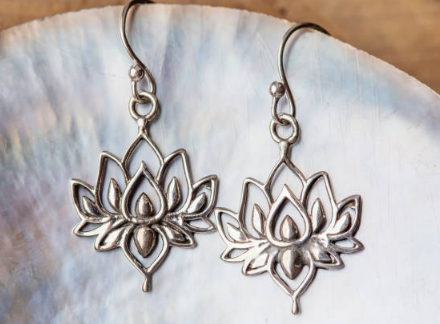Many jewelry shoppers don’t actually know what the term “sterling silver” means. Let’s take a look at what sterling silver is and how it’s made.
What Is Sterling Silver?
Gold silver, or sterling silver for short, is a term used to refer to jewelry or other items that are made of silver and plated with gold. The word “vermeil” comes from the French word and is pronounced “ver-may”.

Another term is “silver-plated”(or “gold-plated silver”), which has the same meaning as “vermeil”.
How Sterling Silver Is Made
Sterling silver jewelry is made by first making the base of an item out of silver and then plating it with a thin layer of gold.
The method of covering the surface of a workpiece with gold is called electrolysis.
Sterling silver can be made from gold of varying purity, but in the United States, there is a minimum requirement: to be considered sterling silver, a piece needs to be plated with at least 10 carats of gold (equivalent to about 42% gold content).
In addition, U.S. regulations state that items cannot be sold as gold plating unless the gold plating is at least 2.5 microns (0.0025 mm) thick.
In addition, if the core of the work contains a metal other than silver, the seller should disclose this.
Gold Plating and Durability
The lifespan of sterling silver jewelry depends on the thickness of its gold plating. The thicker the top layer of gold of an item, the longer it will wear out.
The carats of the gold layer are also related to the durability of the jewelry: the higher the carats of the plating, the softer the gold alloy and the easier it is to scratch the surface.

Sterling Silver with Gold-Plated and Gold-Plated Jewelry
The main difference between sterling silver jewelry and gold-plated/gold-filled jewelry is that the base of sterling silver jewelry is made of silver, whereas gold-plated and filled jewelry can be made from a variety of metals.
As a result, sterling silver jewelry is more valuable than gold-plated or gold-plated jewelry made from cheaper base metals or alloys.
Sterling silver does not necessarily have a thicker layer of gold than gold-plated items.
As for gold-plated jewelry, while its gold-plated thickness may vary, it is usually thicker than gold-plated jewelry.
As a result, you may find that gold-plated jewelry is superior to gold-plated jewelry from a durability standpoint.
Gold Plating, Nickel Content and Allergies
In general, if you wear sterling silver jewelry, you don’t have to worry about an allergic reaction to nickel because such jewelry usually does not contain metal.
However, if the base of the part does contain nickel and you are allergic, you may develop a rash when the plating wears out.
Remember: if sterling silver products contain nickel, suppliers are required to disclose this in the United States, so don’t forget to check if you’re concerned about allergies.
